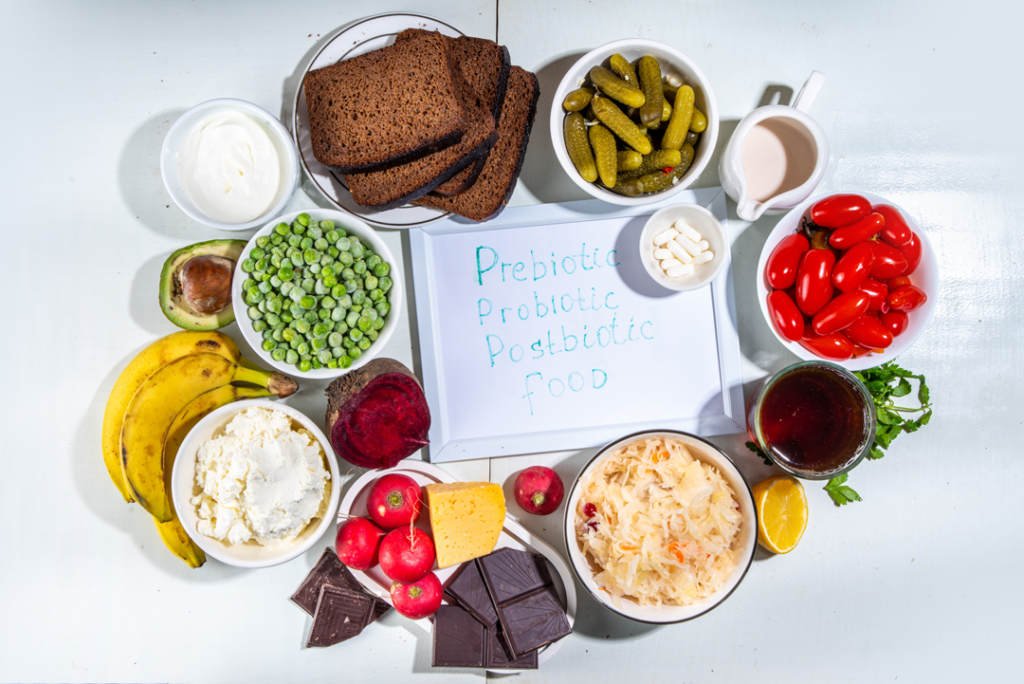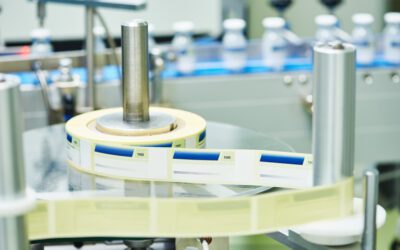By Gary Smith (Colorado State University), Aeriel Belk (Auburn University), and Keith Belk (Colorado State University)
Of the trillions of microbes that inhabit the human body, 95% reside as an ecosystem in the large intestine known as the gut microbiome.1 These microbes are mostly beneficial and influence our health and well-being in a symbiotic relationship by helping digest our fibrous foods, producing vitamins, preventing pathogen colonization, and producing molecules and metabolites that interact and regulate our immune, metabolic, and nervous systems.1 The more we learn about the details of associations, relationships, and cause-and-effect sequelae between gut microbiomes and human health, the more obvious it becomes that people might be able to affect – if not control – their own destiny by modifying or supplementing their dietary choices.
The Role of Diet in Enhancing Health
There is growing interest in enhancing health through diet modification, which includes adding foods perceived to promote health and/or eliminating those foods believed to have a negative impact on health.2,3 Consumers across the globe prefer this functional nutrition rather than reductionist methods of diet control; 71% of consumers agree that it is important to choose foods that positively boost nutrition or benefit how the body functions.4
A growing portion of these consumers are embracing diet and lifestyle changes in a movement toward eating functional foods. This is specifically described in the Food is Medicine initiative led by the U.S. Department of Health and Human Services, which involves connecting nutrition and healthcare through both dietary and prescription programs. An estimated 70% of global consumers have made changes to their diet and lifestyle to improve their immune health6, and a national survey recently found that consumers are increasingly eager to explore questions about how foods can support immune response and cognitive enhancement by improving gut health.7
The Importance of a Healthy Gut Microbiome
We have established here and in our previous publication that the gut microbiome is crucial to our physical well-being, thus we need to maintain a healthy one. Much of this can be accomplished by eating foods that can feed your microbiome; if you eat too much sugar or too little fiber, the gut microbiota can’t get enough nutrients.8
Scientific Insights on Diet and Gut Health
Several potential diets have been evaluated in the scientific literature to investigate how changing your diet could impact the health of your gut microbiome. A study of the specific strains of gut microbes capable of mitigating hypertension found that consumption of fruits and vegetables provided the ideal gut microbiome composition.10
Additionally, attempts to alter the balance of children’s gut microbiome by provision of simple nutrients (sugars, vitamins, and minerals) do not impact the large intestine (where the gut microbiome is most dense) because simple nutrients are largely digested/absorbed in the small intestine.11 There is general agreement on the ideal diet for maintaining a healthy gut microbiome. Your microbes are what you eat; a shift from a high-fat/low-fiber diet, to a low-fat/high-fiber diet leads to a rapid and significant change in the composition of the gut microbiome.12 The best way to take care of the gut microbiome and your overall health is by consuming a healthy diet that’s rich in fruits, vegetables, and fiber – and low in fat, sugar, and processed foods.13
Challenges in Maintaining a Healthy Diet
We know what scientists say we ought to eat, but that’s easier said than done. We mess it all up by snacking and by eating way too much sugar, refined carbohydrates, and ultra-processed food.15 The composition of the gut microbiome changes throughout our lives.16 The gut microbiome is constantly monitoring and reacting.17
The qualitative and quantitative fluctuations that occur in the gut microbiome communities can make the difference between health and sickness.18 Only a long-term healthy diet can truly maintain or improve your gut microbiome; eat foods that are high in fiber (grains, legumes, vegetables), fermented foods (kimchi, kefir, and sauerkraut, which all contain live microorganisms), and foods that are low in sugar.8
Impact of Diet and Sleep on Gut Microbiome
Diet and sleep are major factors in ratios of gut microbes because of how these factors can impact nutrients, water availability, and pH.19 The balance of microbes in the human gut varies substantially from morning to night and even more by seasons; fluctuations completely transform the microbiome from summer to winter.20 Periodic fasting by the host can shift the microbiome toward higher proportions of beneficial microbes.21
A person’s immune system does not simply shape its gut microbiome, but the person’s microbiome also shapes its immune system.24 Sensory cells in the gut influence hunger and satiety via both neuronal communication and hormone release; behaviors, mental state, and neurological disorders are controlled by relaying messages between the brain and the digestive tract.25,26,27
The Complex Relationship Between Gut and Brain
The gut microbiome community harbors a trillion microbes that influence human physiology – and, thereby, human health and well-being.8 We don’t know whether the gut is influencing the brain, or the brain is influencing the gut.8 Researchers at Stanford University are studying the presence and difference of cell-types (i.e., epithelial, connective tissue, nerve, and immune cells) of the entire intestine to determine how the cells interact with each other – and the brain.28
Meanwhile, scientists are wrestling with two other matters: What happens to the balance of the gut microbiome when a person uses an antibiotic to fend off an infection of some sort or uses a substitute for real sugar? When a person is given an antibiotic to cure some health issue, it causes collateral damage of that person’s gastro-intestinal microbiome and sometimes causes antimicrobial resistance in other pathogens and/or weakening of the person’s immune system (making the person more susceptible to other diseases).29
Researchers from the European Molecular Biology Laboratory identified a number of drugs that can help protect against the collateral damage often caused by antibiotics to bacteria in the gut without negatively impacting their effectiveness.30 Non-nutritive sugar-alternatives (e.g., Sucralose® and Saccharin®) may impair glucose responses by altering our gut microbiome, and they do so in a highly personalized manner (i.e., by affecting each person in a unique way).31

The Effect of Antibiotics and Sugar Substitutes on Gut Microbiome
Maintaining a balanced and healthy gut microbiome by simply modifying your repertoire of food-group choices is exceedingly difficult given the effects of diurnal cycles, seasons, antibiotics, and sugar substitutes. What if you instead modified the balance and composition in the gut microbiome by supplementing the microbes in the gut?
Interest in this approach started when food processors responded to consumer demands for diets that would improve their immune health.6 Early research on humans and farm animals helped characterize peaceable vs. fractious microbiomes and beneficial vs. harmful species/strains of gut microbiota.32,33,34 Research conducted on meat animals (cattle and swine) continues to broaden our knowledge of the gut microbiome.35
The Potential of Probiotics in Treating Diseases
Research findings in Science suggest that manipulating the gut microbiome could be a way to have an effect on the brain without putting anything directly into the brain; scientists believe the best way to approach preventing and treating neurodegenerative diseases is by modifying the gut microbiome with specialized diets and probiotics.27,36 A growing body of scientific literature has linked prebiotics, probiotics, and postbiotics with improvements in metabolic diseases, including obesity and cholesterol abnormalities, depressive symptoms, and poor sleep qualities.13,27

Understanding Prebiotics, Probiotics, and Postbiotics
So, what are these -biotics? And, can they make a difference by supplementing the gut microbiota, providing food for the microbes, aiding beneficial strains of microbes, and/or increasing the molecules/metabolites that an ideal microbiome provides?
The three -biotics descriptors are used more as marketing terms rather than true medical terms but are useful to understand the different types of supplements that can be used to potentially alter the microbiome.
The suffix -biotic means pertaining to life or living matter; of those three terms, only prebiotic is described in the medical dictionary as meaning “the period before the existence of life on Earth.”38 But, the more commonly used definitions for these terms are to describe prebiotic as chemicals that precede development of a community of gut microbiota (of, basically, food for the microbiome), probiotic means microbes that can be supplemented into the gut microbiome directly, and postbiotic means chemicals produced by the gut microbiota.
Understanding Prebiotics, Probiotics, and Postbiotics
Marketers of prebiotics, probiotics, and postbiotics claim that these beneficial molecules, metabolites, or microbes are critical to our gut health and could help treat everything from obesity to depression, to sleep disorders by supporting the community of microscopic organisms that live in the gut microbiome.13 They claim that all three of the -biotics are necessary for gut health and so much of our immune function and overall health is tied to our gut microbiome, but true evidence that these tools are able to significantly alter the microbiome and gut health long-term is still unclear.39
Prebiotics are types of beneficial molecules.13 Prebiotics are sources of food for specific probiotics and other microbes already in the gut microbiome; they are typically a form of carbohydrate, mostly fiber, that people don’t have the enzymes to digest.40,41 Things like whole oats, onions, bananas, asparagus, wheat, barley, and beans move through the digestive tract to the intestine where beneficial bacteria can feast on them.42 Chemically, the fibrous foods contribute oligosaccharides, beta-glucans, chicory fiber, inulin, etc., which will be on the ingredient list.42
The Benefits of Probiotics
According to the International Scientific Association for Probiotics and Prebiotics, probiotics are live microorganisms that, when administered in adequate amounts, confer a health benefit on the host.43 Some probiotics promote a healthy microbial balance and diversity in the gut, while others help reduce the number of pathogens.41
The Cochrane Database of Systematic Reviews (2022) found that there is specific evidence that certain probiotics can:
- Reduce antibiotic-associated diarrhea
- Treat infectious pediatric diarrhea
- Improve some digestive symptoms, including those caused by mild-to-moderate irritable bowel syndrome
- Help manage symptoms associated with poor digestion of lactose
- Reduce colic symptoms in infants
- Decrease some common infections, including those of the respiratory tract, gut, and vaginal tract43

Common Sources of Probiotics
Some fermented and/or cultured foods, such as yogurt, kefir, kimchi, fermented soybeans, sauerkraut, and kombucha naturally contain probiotics 8,39 as do some infant formulas and dietary supplements.43
The most common probiotic are Lactobacillus and Bifidobacterium of dozens of strains; different strains are effective on specific ailments but have no effect on other illnesses.44 Consulting the website USProbioticGuide.com is recommended for those making decisions about which probiotic therapy would be beneficial to a specific person’s ailment.44 Examples of probiotics available in supermarkets and drug stores are:
- Great Value Yogurt®
- Ozona Probiotics For Digestive Health®
- GoHealthy Probiotics For Infants, Toddlers, and Kids®
- Probiotic 10®
All of them depend on Lactobacillus and Bifidobacterium strains. Another dietary supplement, Probio Slim® is actually a “Synbiotic”, which contains seven strains of Lactobacillus, a Bifidobacterium plus a prebiotic comprised of inulin, green tea, papaya, and fig extract. A “Synbiotic” is a synergistic mixture of prebiotics and probiotics in which the prebiotic increases the benefit of a paired Probiotic.41
The Ongoing Debate on Probiotics
The jury is still out on probiotics; while the addition of these organisms may provide temporary benefits, it is not yet clear whether they can actually modify the gut microbiome long-term. These new organisms tend to get kicked out because all the other microbes in that community are accustomed to being with each other and have a strong ecosystem – similar to how it can be tricky to introduce a new animal species to a habitat and expect it to survive in a healthy way.45
The Potential of Live Bacterial Products (LBP)
Researchers are using gut microbiome characterizations and bioinformatics to develop Live Bacterial Products (LBP) as living drugs for the development of therapeutics that incorporate recombinant probiotics; there has been success in the selection of LBP strains to reprogram the infant gut microbiome to a healthy state.46 An engineered probiotic could revolutionize the way we treat chronic diseases; if we can use living microbes to produce medicine from within the body they can keep producing the active metabolite – as is needed – for the rest of the person’s life.47
The Role of Postbiotics in Health
Postbiotics are metabolites produced by probiotics; these metabolites help prevent disease and promote overall health and well-being.48 Postbiotics are metabolites or molecules of the probiotics that you have ingested.37 The microbes in your gut consume the undigestible prebiotic fiber and produce bioactive compounds called postbiotics.39
Postbiotics have specific physiological benefits of their own, including antioxidant, anti-inflammatory, and anticarcinogenic properties.49 Marketers say all three “-biotics” are critical for supporting the community of microscopic organisms in the gut microbiome; with both beneficial and harmful bacteria, the three “-biotics” help tip the balance in the positive direction.13
Conclusion: Maintaining Gut Health
To reiterate, we do not yet fully understand the mechanisms for how these -biotics impact human health, or really whether they are actually helping at all. They are likely not causing harm, however, so it is a reasonable method to try if you are experiencing gastrointestinal issues or are looking for ways to balance your health.
It is important to be careful, though; probiotics are not regulated by the FDA, so there is not a guarantee that the claims on the packaging are actually correct, or that the contents even truly contain what the marketing says.
Additionally, these compounds could interfere with other medicines you are taking. So, if you’re going to take a prebiotic or probiotic, we recommend you check in with a medical professional before you do so.42 Plus, these products can be expensive, so you want to make informed decisions before making an economic investment in these supplements.
The best way to take care of the gut microbiome and your overall health is by consuming a healthy diet that’s rich in fruits, vegetables and fiber – and low in fat, sugar, and processed foods. Taking a prebiotic or a probiotic supplement alone will not be enough to fix a bad diet!8,13,50
REFERENCES
- 1 Hanson, Nur. 2023. 8th Annual Translational Conference. April 15 Issue.
- 2 Archer Daniels Midland.™️ 2020. October 29 Issue.
- 3 Arnot, Charlie. 2020. Meatingplace. June 19 Issue.
- 4 Innovative Market Insights®. 2021. Prepared Foods. July 16 Issue.
- 5 Connolly, Jenn. 2021. Packaging Strategies. May 13 Issue.
- 6 Avis, Ed. 2022. Food Processing. January 12 Issue.
- 7 Sowder, Amy. 2023. The Packer. August 3 Issue.
- 8 Sterbenz, Christina. 2023. National Geographic. June 30 Issue.
- 10 Song, Ju. 2023. Inside Precision Medicine. June 16 Issue.
- 11 Robertson, Ruairi. 2023. Inside Precision Medicine. February 16 Issue.
- 12 Brouillette, Monique. 2022. Inside Precision Medicine. October Edition.
- 13 Colino, Stacey. 2023. National Geographic. March 30 Issue.
- 15 Tanzi, Rudy. 2022. CNN. December 5 Issue.
- 16 Ball and Boyle. 2023. Genetic Engineering News. June 9 Issue.
- 17 Bedree, Joseph. 2023. Genetic Engineering News. April 20 Issue.
- 18 Liszewski, Kathy. 2023. Genetic Engineering News. June 9 Issue.
- 19 Zarrinpar, Amir. 2023. Inside Precision Medicine. May 10 Issue.
- 20 Machado, Carolina. 2023. Inside Precision Medicine. April 28 Issue.
- 21 Groisman, Eduardo. 2023. Genetic Engineering News. March 21 Issue.
- 22 Hymes, Matthew. 2023. Genetic Engineering News. June 7 Issue.
- 23 Chen et al. 2020. BB Science Focus. July 4 Issue.
- 24 Hanson, Mark. 2023. Inside Precision Medicine. July 21 Issue.
- 25 Anikova, Polina. 2023. Genetic Engineering News. June 23 Issue.
- 26 Morton, Jamie. 2023. Inside Precision Medicine. June 28 Issue.
- 27 Dantas, Gautam. 2023. Genetic Engineering News. June 14 Issue.
- 28 Nolan, Garry. 2023. Genetic Engineering News. July 20 Issue.
- 29 Genetic Engineering News. 2021. October 16 Issue.
- 30 Maier and Goemans. 2023. Inside Precision Medicine. April 17 Issue.
- 31 Elinav, Eran. 2023. Inside Precision Medicine. August 19 Issue.
- 32 Uyeno et al. 2015. Microbe Environment 30:126-132.
- 33 Fouhse et al. 2016. Animal Frontiers 6:30-36.
- 34 Venable et al. 2016. Animal Frontiers 6:43-49.
- 35 Scott, Chris. 2023. Meatingplace. July 20 Issue.
- 36 Holtzman, David. 2023. Genetic Engineering News. January 13 Issue.
- 37 Rosales, Anna. 2023. National Geographic. March 30 Issue.
- 38 Dorland’s Illustrated Medical Dictionary. 1988. W.B. Sanders Company. Philadelphia, PA.
- 39 Rosales, Anna. 2023. Institute of Food Technology. March Edition.
- 40 Cresci, Gail. 2023. National Geographic. March 30 Issue.
- 41 Kemin.™️ 2023. Eye On Biotics. Accessed on 9/7/2023.
- 42 Cresci, Gail. 2023. Cleveland Clinic Children’s Hospital. June 30 Issue.
- 43 ISAPP. 2023. Probiotics. info@isappscience.org. Accessed on 9/14/2023.
- 44 Reid, Gregor. 2023. Western University of London Ontario. March 30 Issue.
- 45 Kashyap, Purna. 2023. Mayo Clinic. June 30 Issue.
- 46 Hans, Heidi. 2023. Clinical Microbiomics.® June 9 Issue.
- 47 Quintana, Francisco. 2023. Inside Precision Medicine. August 9 Issue.
- 48 Smith, Lloyd. 2021. WebMD. September 8 Issue.
- 49 Crist, Gina. 2023. University of Delaware. March 30 Issue.
- 50 Sonnenburg, Justin. 2023. National Geographic. June 30 Issue.


